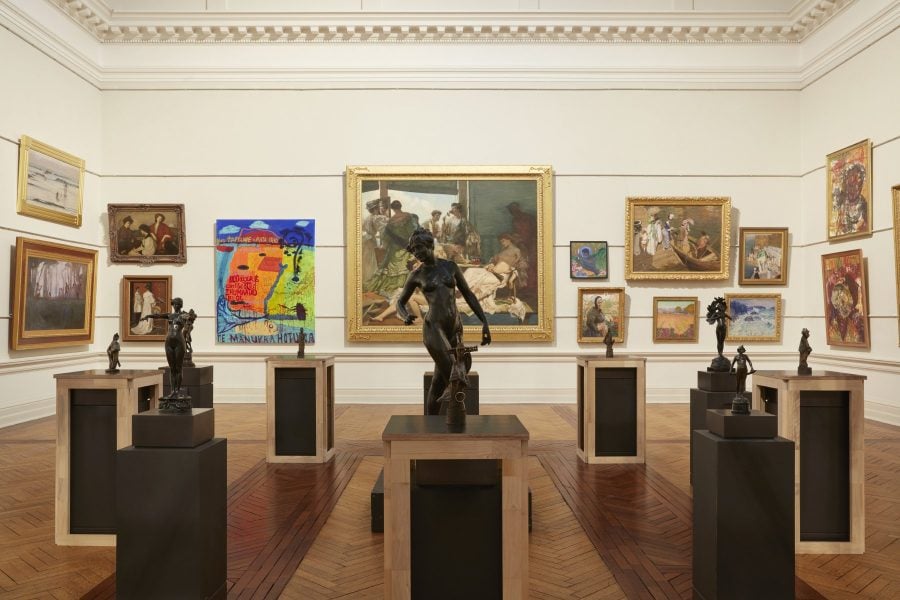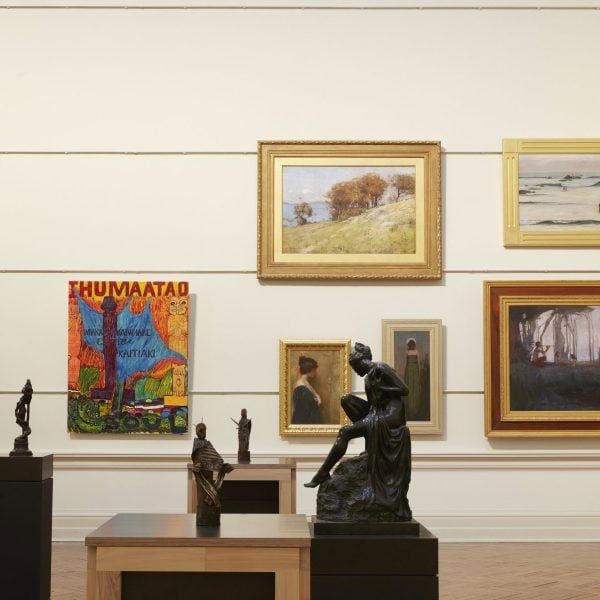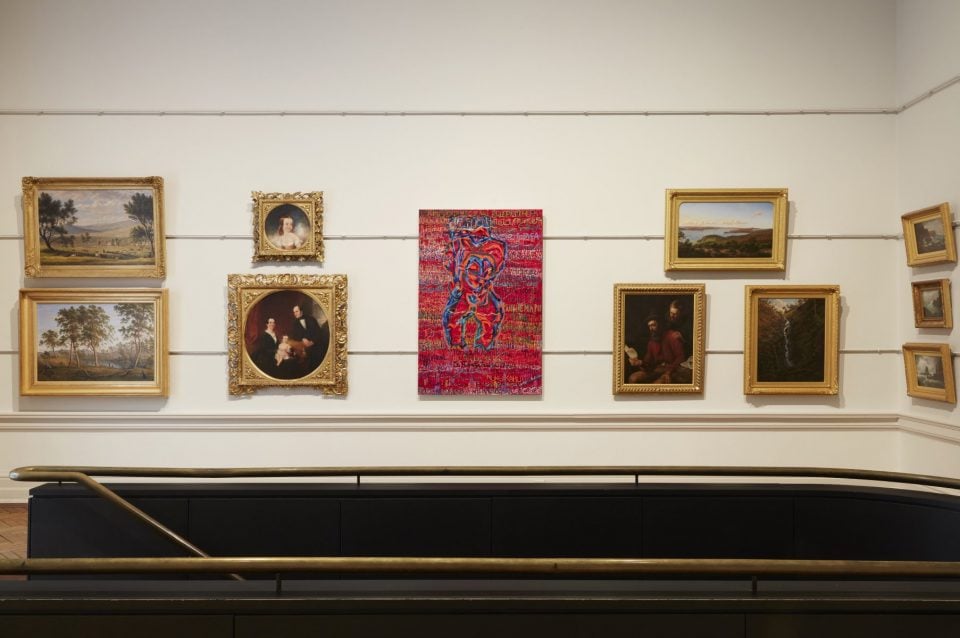Home Participants 22nd Biennale of Sydney (2020) Emily Karaka
Emily Karaka


Emily Karaka
Born:
1952 in Auckland, New Zealand
Lives in:
Tāmaki Makaurau / Auckland

Emily Karaka’s sumptuous, colourful and powerful paintings have long reflected her physical involvement in Māori Land Rights and Treaty Claims issues. Her new series of works are directly indexed to an ongoing political struggle and land dispute at Ihumātao, where Māori protestors have contested a proposed housing development on a sacred area and significant archaeological site, calling for the land to be returned. Through her Ahiwaru tribal group, Karaka has been directly involved in the ongoing struggle, and these paintings tell parts of the story from a position within the process. The works are almost cartographic, creating visual space on each canvas that is tethered to material, cultural and political geographies and languages.
Emily Karaka is of Ngati Te Ahi Waru bloodlines with whakapapa to Puketapapa and Ihumātao from her father John Mita Karaka, named after his Great Grandfather Mita Karaka who went to England with the Maori King to address Treaty of Waitangi concerns in 1914. She has painted and exhibited her works for more than 40 years and worked since 1992 for her iwi Ngai Tai ki Tamaki addressing its environmental concerns and Treaty of Waitangi claims. Her paintings address political and environmental issues and Māori values.
Karaka’s works are held in New Zealand’s major collections at Te Papa Tongarewa Museum of New Zealand, Wellington and Toi o Tāmaki Auckland Art Gallery, Auckland. Major exhibitions include Two Artists: Emily Karaka & Shona Rapira Davies, Te Papa Tongarewa Museum of New Zealand, Wellington (2015) and Five Māori Painters, Toi o Tāmaki Auckland Art Gallery, Auckland (2014). In 1995, Karaka participated in Africus, the inaugural Johannesburg Biennale and from 1992-93 her work was presented in Te Waka Toi: Contemporary Māori Art, a major exhibition of Māori art touring the United States (Museum of Man, San Diego; Heard Museum, Phoenix; Field Museum, Chicago; Burke Museum, Seattle; University of Hawaii, Oahu).
Commissioned by the Biennale of Sydney with assistance from Creative New Zealand Courtesy the artist
